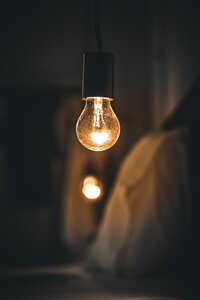If you have ever purchased lighting or electronic devices, you have probably come across the term IP rating. But what exactly does this code mean? IP ratings (Ingress Protection) indicate how well a product is protected against the intrusion of solid particles (such as dust) and liquids (such as water). This is especially important for lighting and electronic devices, as the right protection ensures they operate safely and remain durable in different environments.
The IP code consists of two digits:
The first digit indicates protection against solid objects (such as dust and dirt).
The second digit indicates protection against moisture and water.
In this article, we focus on IP20, a common classification for indoor lighting and electronic devices.
The IP20 code consists of two parts:
In other words, a product with IP20 is resistant to touch and large dust particles but offers no protection against water or moisture. This makes it unsuitable for damp environments such as bathrooms or outdoor use.
Since IP20-rated products offer no protection against water, they are intended exclusively for indoor use in dry and clean environments. Typical applications of IP20 include:
IP20-rated products are not suitable for humid or dusty environments. Situations where a higher IP rating is needed include:
To determine whether IP20 is suitable for you, ask yourself the following questions:
1. Are you using the product indoors in a dry space?
2. Will the product come into contact with water or moisture?
Yes → Choose a higher IP rating, such as IP44 or higher.
No → IP20 may be a good option.
3. Do you want to use the product outdoors?
If you are looking for a lamp or electronic device for your living room, office, or bedroom, IP20 is an excellent choice. Do you need something for your bathroom, kitchen, or outdoors? Then choose a product with a higher IP rating to prevent damage and hazardous situations.
IP ratings play an important role in selecting the right lighting or electronic devices. IP20 means that a product is protected against larger dust particles but offers no protection against water. This makes it suitable for dry indoor spaces such as living rooms, offices, and bedrooms, but not for humid or wet environments.
By consciously choosing the right IP rating, you ensure that your lighting and devices last longer and remain safe to use. Do you need a lamp for humid spaces? Choose IP44 or higher. Do you want safe and stylish indoor lighting? Then IP20 will usually suffice.
No comments found.
